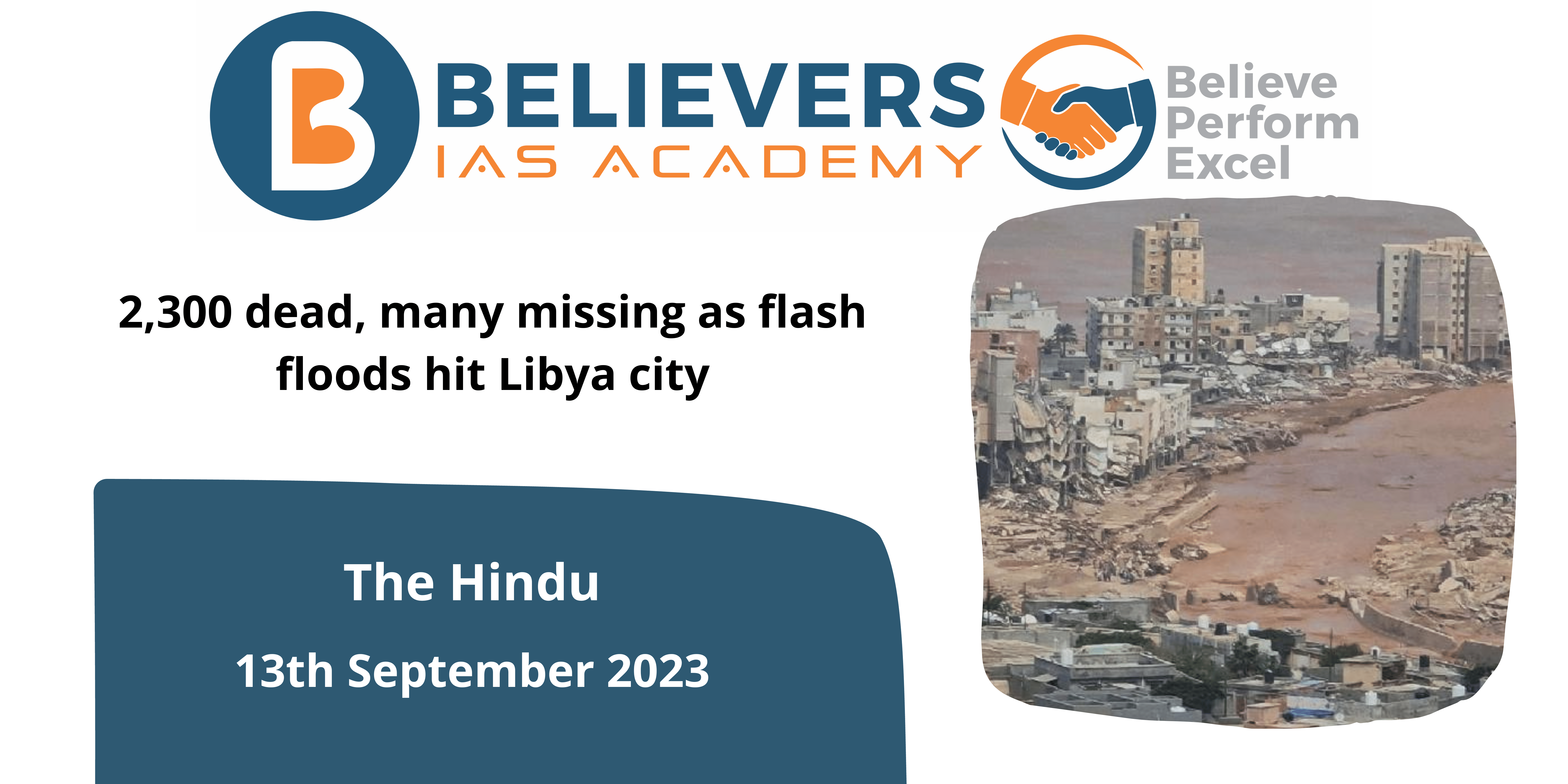2,300 dead, many missing as flash floods hit Libya city
Context
After devastating flash floods tore through an eastern coastal city and burst river dams, at least 2,300 people were murdered and thousands more were reported missing in Libya.
What is happening in Libya?
- In northeastern Libya, the Mediterranean storm Daniel has triggered devastating flooding. At least 5,000 people have died as a result of the storm, and 10,000 more remain missing. Many towns and cities have suffered damage as a result of the storm.
- Two dams collapsed due to the storm, causing more water to enter regions that were already under water. Since 2002, no repairs have been made to the dams. It was just 70 meters (230 feet) tall when the first dam burst. The second dam eventually burst as a result of the water pouring over the first dam and accumulating behind it.
What are the flash floods?
- Natural disasters like landslides and flash floods have the potential to do great harm and endanger human lives.
- Localized flooding that comes abruptly, often in a matter of hours or even minutes, is what defines flash floods.
- They typically result from heavy rains, particularly in locations with poor drainage systems or urban areas with a lot of concrete surfaces.
- Levee or dam failure, abrupt releases of water from reservoirs, and the rapid melting of snow or ice are some other sources of flash floods besides rainfall.
- They can occur with little to no warning and are therefore particularly deadly.
- Flash floods can damage infrastructure, cause rivers and streams to overflow, flood low-lying areas, and force evictions of residents.
What is the difference between Flash Floods and ordinary floods?
- The characteristics of flash floods are an abrupt onset, high intensity, brief duration, and an immediate risk to life and property. On the other hand, floods develop more gradually over time, the water level increases more gradually, and they frequently last longer. Although both types of floods have the potential to be destructive, flash floods are more lethal because of how quick and unexpected they are.
Why did the Floods affect the Libyan region adversely?
- Unprecedented Weather: An extremely powerful low-pressure system that intensified into a hurricane is to blame for the harsh weather. According to scientists, the storm’s severity may have been influenced by the Mediterranean’s warmer water due to climate change.
- Political Conflict and Vulnerability: The ongoing political conflict in Libya has made it more difficult to respond to this catastrophe. The ongoing power struggle between competing administrations makes it difficult to coordinate rescue efforts and communicate risks.
- Dam Collapse: The collapse of two dams close to Derna worsened the situation and resulted in substantial harm and devastation. The gushing water swept out entire neighbourhoods.
How to face flash floods?
- Remain Informed: Pay attention to weather forecasts and keep yourself updated on local weather conditions. Register for emergency alerts and keep up with local news.
- Flood-prone regions should be avoided: Recognise the areas close to you that are vulnerable to flash flooding. Low-lying regions, valleys, and regions close to rivers, streams, or dams may fall under this category.
- Make a strategy for emergencies: Create a strategy for emergencies for you and your family. A meeting place, an evacuation route, and a mode of communication in case you become separated should all be included in this plan. Together with your family, run through the plan.
- Prepare an emergency supply kit: Fill the kit with non-perishable food, water, batteries, flashlights, a first aid kit, critical papers, and additional clothing. Keep this kit in a place that is simple to get to.
- Avoid flood-prone areas: Avoid driving through or walking through flooded areas when it is raining heavily or when a flash flood warning is in effect. Even small amounts of water might knock you off your feet or cause your car to stall. The best course of action is to wait for the floodwaters to subside inside.





